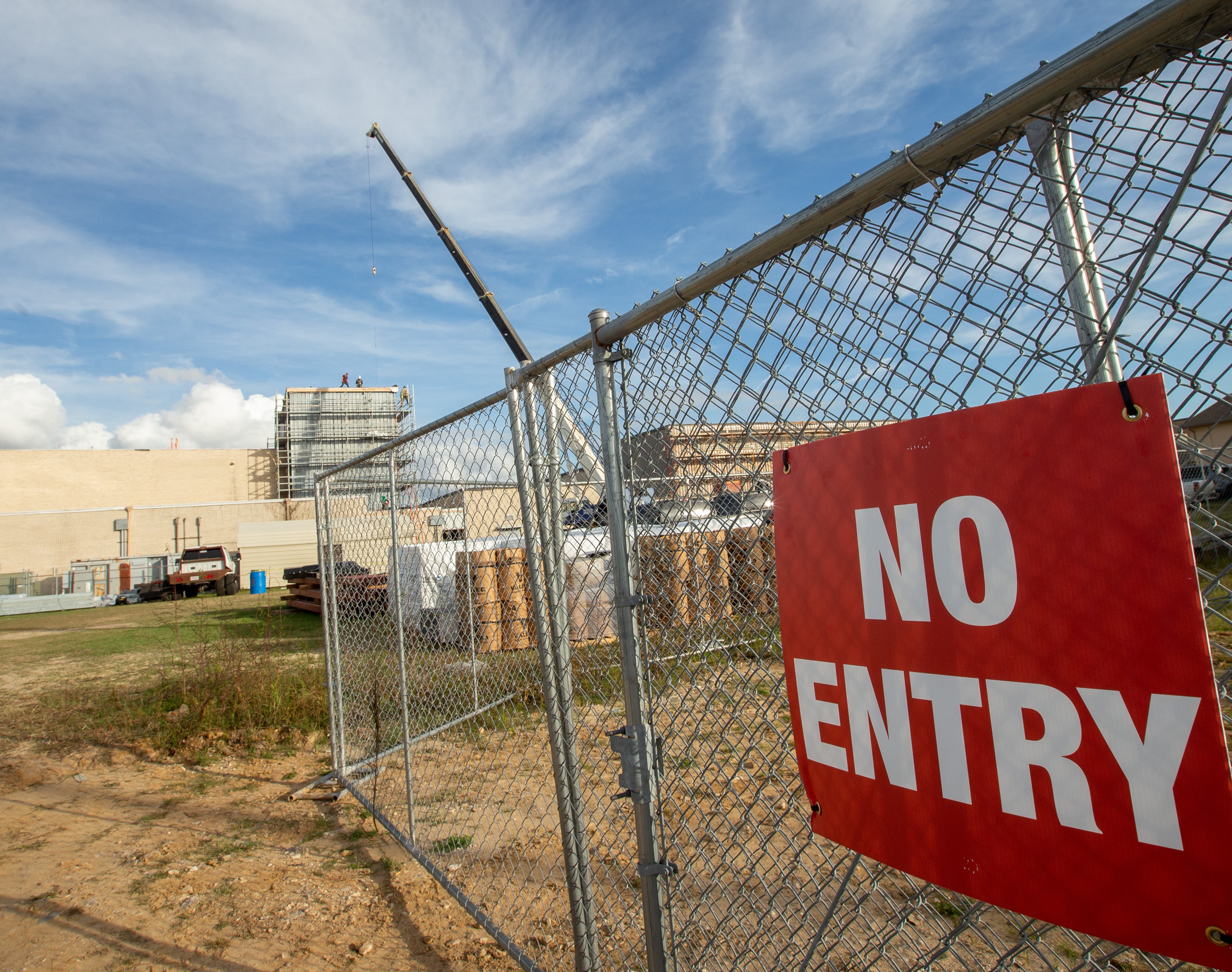CPSB: Schools won’t be fully recovered from storms for years
Published 4:28 am Friday, February 11, 2022

- Construction continues on Lagrange High School on Friday. (Rick Hickman/American Press)
Getting every Calcasieu Parish public school fully recovered from Hurricanes Laura and Delta will likely take three to four years, but School Board officials said Thursday that plenty of work should get done by the end of this year.
During a public servant panel series hosted by the Alliance for Positive Growth, Calcasieu School Board officials spoke about ongoing recovery from the 2020 storms and the challenges related to the COVID-19 pandemic. Wilfred Bourne, school system chief financial officer, said the anticipated hurricane recovery cost is around $400 million, including $150 million for remediation and up to $250 million for rebuilding.
Recovery costs after Hurricane Rita’s 2005 landfall was $26 million, he said.
“We still have a long way to go,” Bourne said. “It’s impossible to have planned for something like that.”
Superintendent Karl Bruchhaus said the student population dropped from just over 31,000 during the 2019-2020 school year, to 27,650 as of last week. He said this is largely because families are still struggling to find housing more than a year after Hurricanes Laura and Delta.
Bruchhaus mentioned a Wall Street Journal article published earlier this month that stated 800,000 resignations in education have occurred since the start of the COVID-19 pandemic in early 2020. He said employee departures in education have risen 148 percent, compared to 27 percent in retail.
“That’s alarming,” he said.
Bruchhaus said the number of school district employees is down from 5,000 pre-hurricanes, to 4,600. He said the drop in employees was not because of firings, but employees who either relocated or retired.
Bruchhaus said 1,755 employees were processed through the COVID-19 portal, meaning they were out after testing positive for the virus, or after having direct exposure. Just over 500 employees were processed before the Christmas break last year, and 1,250 employees have been processed since Jan. 1 because of the highly-contagious Omicron variant.
More than 8,000 students have been processed through the COVID-19 portal so far, with 3,150 before the Christmas break, and another 5,125 since Jan. 1, Bruchhaus said.
Shannon LaFargue, chief academic officer, said the “doom and gloom” mentality is not beneficial for schools or the community. He said it has been a blessing for students to be back in school since August, despite dealing with the difficulty of hurricane repairs and COVID-19.
“We are just so happy to have this degree of normalcy,” he said. “Our kids are happy, and our teachers are happy.”
Bruchhaus said Emergent Method, a Baton Rouge company, is working on a strategic plan for the school system. He said the system is underway on the redistricting process, with public input being sought Feb. 22. He said the board will retain its 15 members, with the board tentatively expected to approve updated maps in March.
Bourne said the district has borrowed roughly $125 million to finance remediation costs. It received $40 from insurance. FEMA will pick up the majority of the remaining costs, he said.
Getting FEMA reimbursement has been a lengthy and difficult process, Bourne said. More than a year after Hurricane Laura, the district has only received about $95 million, including $89 million from FEMA sent through the state, and another $5 million in smaller reimbursements.
Bruchhaus said the district needs area businesses to plead with state and federal politicians on the need to get money back for hurricane recovery costs. Last September, the district shut down construction for 55 days because it had no cash after insurance proceeds and borrowing $125 million. Bruchhaus said the decision, while difficult, got the attention of politicians and led to the district receiving $95 million.
“We never talked to congressmen and senators more in my 34 years than we did when we shut down construction on 50 jobs in Southwest Louisiana,” he said. “We need your help to do that.”
As of this year, 92 percent of students have said they have some form of internet access, Bruchhaus said. He said every school has external Wi-Fi devices to benefit students. He said the district is working with the state on money it received from the federal government to provide internet service in rural areas.
Bruchhaus said every student in grades 3-12 has a Dell laptop, and every pre-K through second grader has an iPad.
The event took place at Reeves Uptown Catering.





